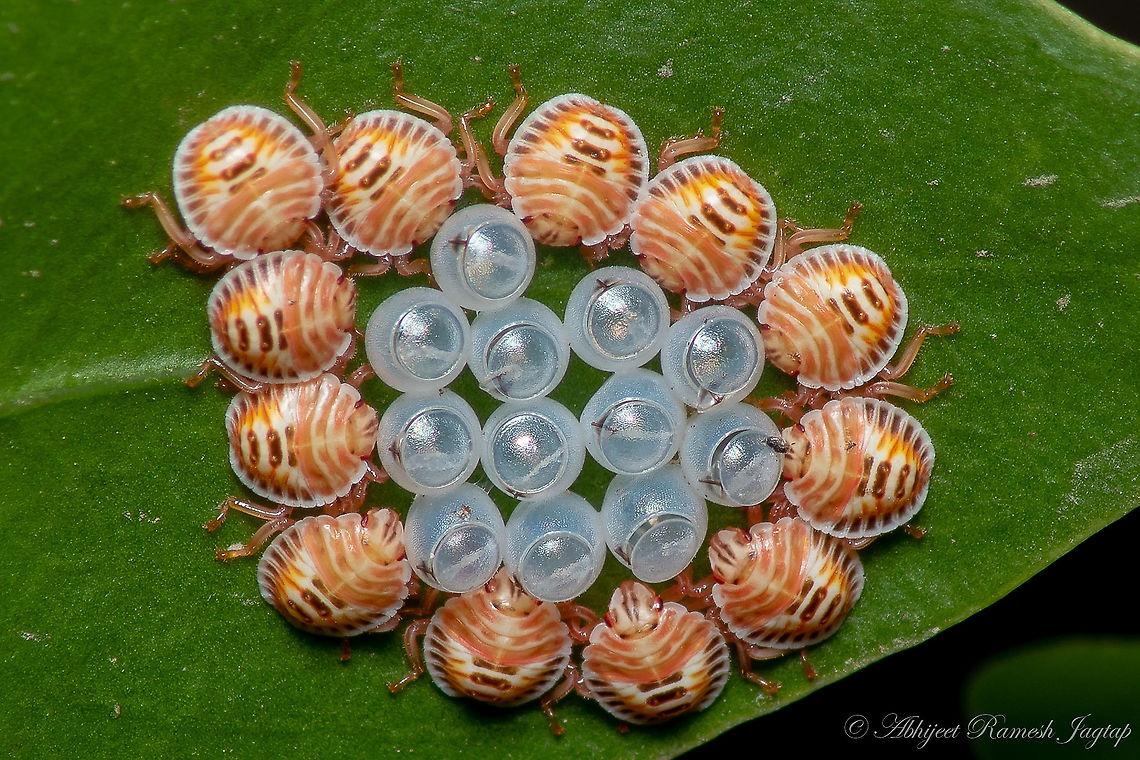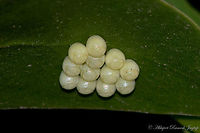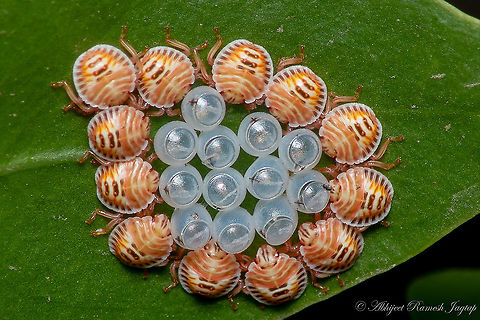 Promoted
Promoted
When mysterious eggs hatched
Yesterday morning when I was watering those plants I checked that leaf on which eggs were laid and I saw these tiny bugs and I was so excited to record them. I know nothing about these tiny gems except for the fact that they are some species of shield / stink bugs.
egg stage 
5 days development 


comments (14)
https://www.inaturalist.org/taxa/359008-Erthesina-fullo/browse_photos Posted 5 years ago
and a super picture. Posted 5 years ago
“Babies” in nature! These cuties are yellow-spotted stink bug (Erthesina fullo) nymphs. Early instar nymphs aggregate closely around their hatched eggs until they reach their third instar. The reason for this aggregative behavior is partly speculative. Nymphal gregariousness may provide aposematic benefits by repelling predators. It is also hypothesized that this resting behavior may be required for the establishment of symbiotic bacteria in the nymphs’ midguts. Stink bugs are phytophagous, meaning they feed on plants, and they require symbiotic bacteria for digestion. The nymphs may acquire these bacteria by eating their chorion (eggshell), which their mother covered with the necessary bacteria.
As beautiful as the nymphs are, the structure of their eggs is also quite remarkable. Females oviposit (lay) eggs in clusters. The eggs are barrel-shaped and have a subtle, yet striking, mosaic pattern. At the top of the egg is an operculum, which is sort of like a lid that lifts during hatching. Surrounding the operculum are tiny pores, called aeropyles, which enable gas exchange. Finally, at the top of each egg, you’ll notice a brownish, x-shaped mark. This is the spot where the nymphs pressed their egg-bursters to help crack the egg. When the first egg hatches, a vibration ripples through the other eggs causing them to hatch as well! Synchronized hatching! The embryos can actually discriminate between egg-hatching vibrations and other vibrations caused by wind and rain so that they only hatch in response to the appropriate frequency. It’s assumed that hatching in synch protects clutch-mates from being cannibalized by their siblings. {Spotted in India by JungleDragon user, abhitap} #JungleDragon #Insecteggs #Erthesinafullo #StinkBugEggs
https://www.facebook.com/jungledragonwildlife/ Posted 5 years ago